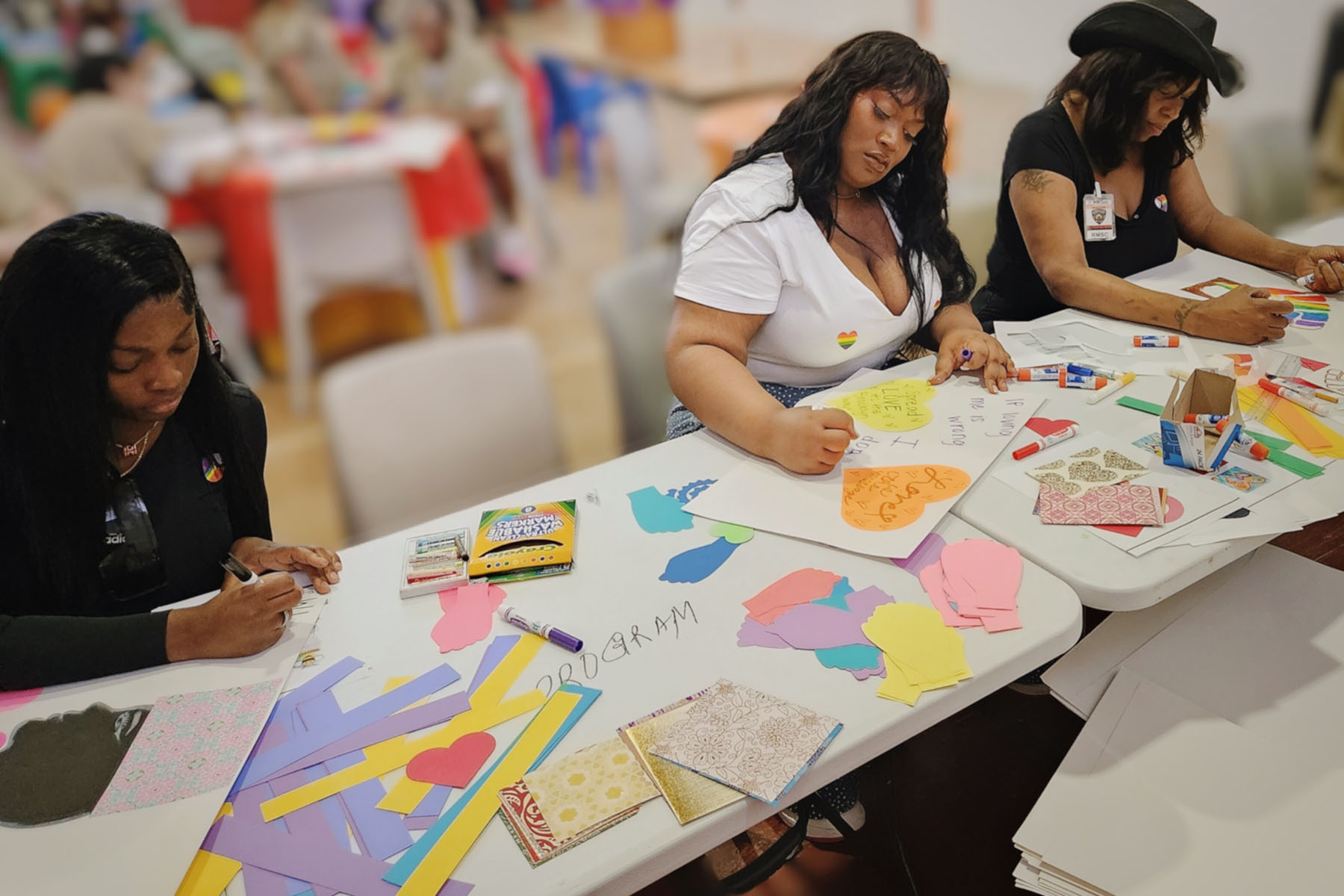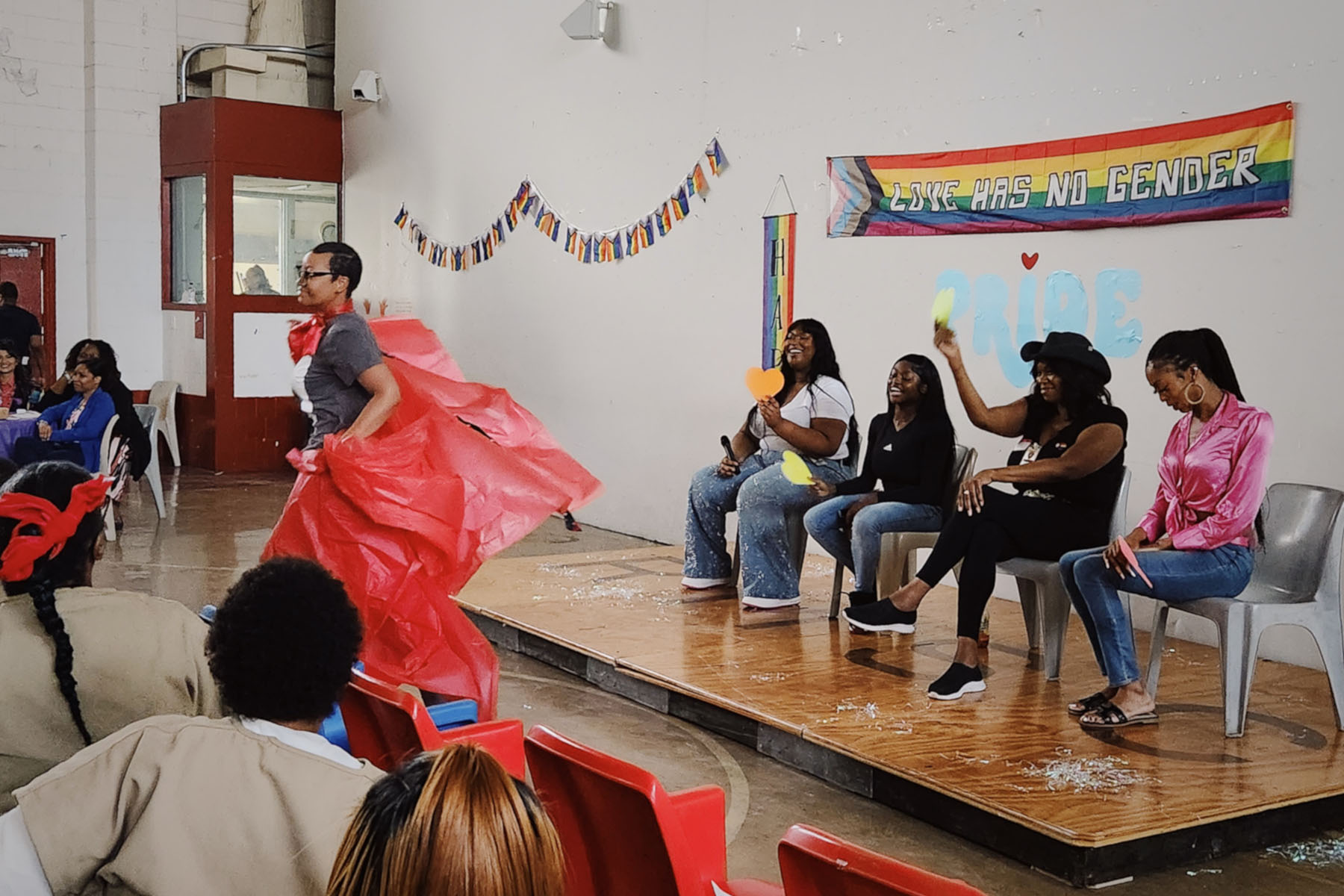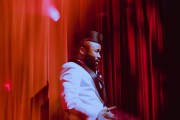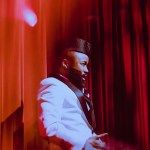Originally published by The Meteor.
New York’s Rikers Island is one of the nation’s most notorious jails, where incarcerated trans people are treated especially inhumanely. But last Thursday, it was also the site of the second annual vogue ball for trans incarcerees. “We wanted to give our incarcerated siblings more opportunities to show their dedication to the culture and the art form that is ballroom,” says Jordyn Jay, founder of Black Trans Femmes in the Arts (BTFA), which organized the ball and has funded and supported Black trans femme artists for five years now. “We are there to celebrate them and to bring them joy in this very dark, cruel system of mass incarceration.”
The Meteor’s Mik Bean spoke with Jay about the Rikers ball and other radical acts of hope.
Mik Bean: Shows like Pose and Legendary and Beyoncé’s RENAISSANCE tour have brought ballroom culture to a wider audience. But its history is one of radical celebration in the face of violent criminalization. Why was it important to bring ballroom back to Rikers?
Jordyn Jay: So I want to be clear that the idea [for the ball] came from the folks detained and incarcerated at Rikers Island, and that is in line with the history of ballroom. Vogue began in Rikers Island from folks who were incarcerated there, referencing images that they saw in magazines. That was the only connection they had—not only to the outside world, but to their femininity, through expressing themselves by mimicking the models’ lines and shapes.
Modern ballroom culture as we know it was started [in the 1970s] by Crystal LaBeija, as a Black trans woman’s dream for what society could be. She created an ecosystem in which trans beauty and bodies were celebrated. We are grateful to the people who’ve taken ballroom to a global stage, but there are also consequences when you open up a safe and sacred place to the world. A lot of the femme queens—which is how we refer to trans women in the ballroom scene—have noticed that there’s been [little] appreciation for us as individuals despite the fact that we are, historically and currently, what people come to see.
So many ballroom legends and icons have passed through Rikers Island because of the criminalization of trans bodies and what trans people have to do to survive. It’s especially amazing that we’re able to bring formerly incarcerated trans women to work with currently incarcerated trans women and celebrate ballroom culture in this space during Pride—and to do so with an abolitionist lens.
Can you explain what you mean by an “abolitionist lens”?
It’s so important that this ball is happening during Pride Month because pride and carcerality have a linked history. There would be no Pride Month without police brutality—without mass incarceration.
Rikers is a global symbol of the oppression of America’s mass incarceration and policing systems. So when we bring the arts and bring pride into that space, it is in itself a protest. We are hoping that by bringing the arts into Rikers…that this revolutionary, transformative energy of the arts is able to carry [incarcerated people] forward.

Can you describe the feeling of being at the Rikers ball?
I’d be remiss if I didn’t mention the darkness that we feel as we travel onto the island, as we navigate security, as we walk down the halls and folks are forced to stop and put their heads against the wall and their hands behind their back. It is a stomach-sinking feeling. But once we enter that room and see the faces of the folks who we came to support, there is so much empathy and so much joy.
It almost feels wrong to say that our visit to Rikers was fab, but truly, that’s the best way I can describe it. I think we came in with the intention of bringing joy and excitement to the women who were detained. We got just as much excitement as I hope that we gave them. The energy—the femme queen energy in particular—was just so palpable in the room. There was so much joy from the moment that we walked in.
-
Read Next:
Being trans is itself an act of creation. Can you share more about how you see that link in your own work?
So many of the organizing bodies that center around Black trans folks are geared towards houselessness, HIV/AIDS, and fighting [anti-trans] legislation. These things are really crucial, but [they] aren’t focused around joy. It’s a lot of talk of loss and trauma, and that really took a toll on me in the early days of my transition.
So I wanted there to be a space where we could not only come together and center joy, but also express ourselves through the arts and have the resources to do that. [Through grantmaking and production support, BTFA fosters the careers of artists like Kiyan Williams, recently celebrated for their work in the Whitney Biennial.] There are so many of us that have never had someone to sit down and touch our hand and say: “You can do this. I believe in you. I want to see your art in the world. I want to hear your voice in the world.”
Trans people have to create ourselves in a world that tells us that we shouldn’t exist, and that is the ultimate artistic expression. We’ve already broken this gender binary and this understanding of how people are able to exist in the world, so there’s really an endless flow of possibility. As I was moving through my transness and meeting new trans people, every one of them was an artist in their own way. When people engage with art created by Black trans femmes, it allows them to understand us as human beings—and to see themselves in trans people.
What is the future you envision for Black trans femmes artists?
BTFA’s vision statement is that we envision a world where Black trans femmes can create without limitations. The headline is always “Black trans femme artists,” and I think that’s wonderful for representation’s sake. But my question is: At what point do we as artistic scholars challenge ourselves to view this art as art and critique it as such? When we start to engage with the actual work, there’s so many more important conversations that can be had.
It’s just a pleasure to be able to watch this program expand. It’s in line with all that being a femme queen is: We break barriers down and we disrupt systems. Our form of protest in this space is joy, is laughter, is cheering. We hope that they all felt the power and energy behind this too-brief but very beautiful moment that we got to share.
Recommended for you
From the Collection






